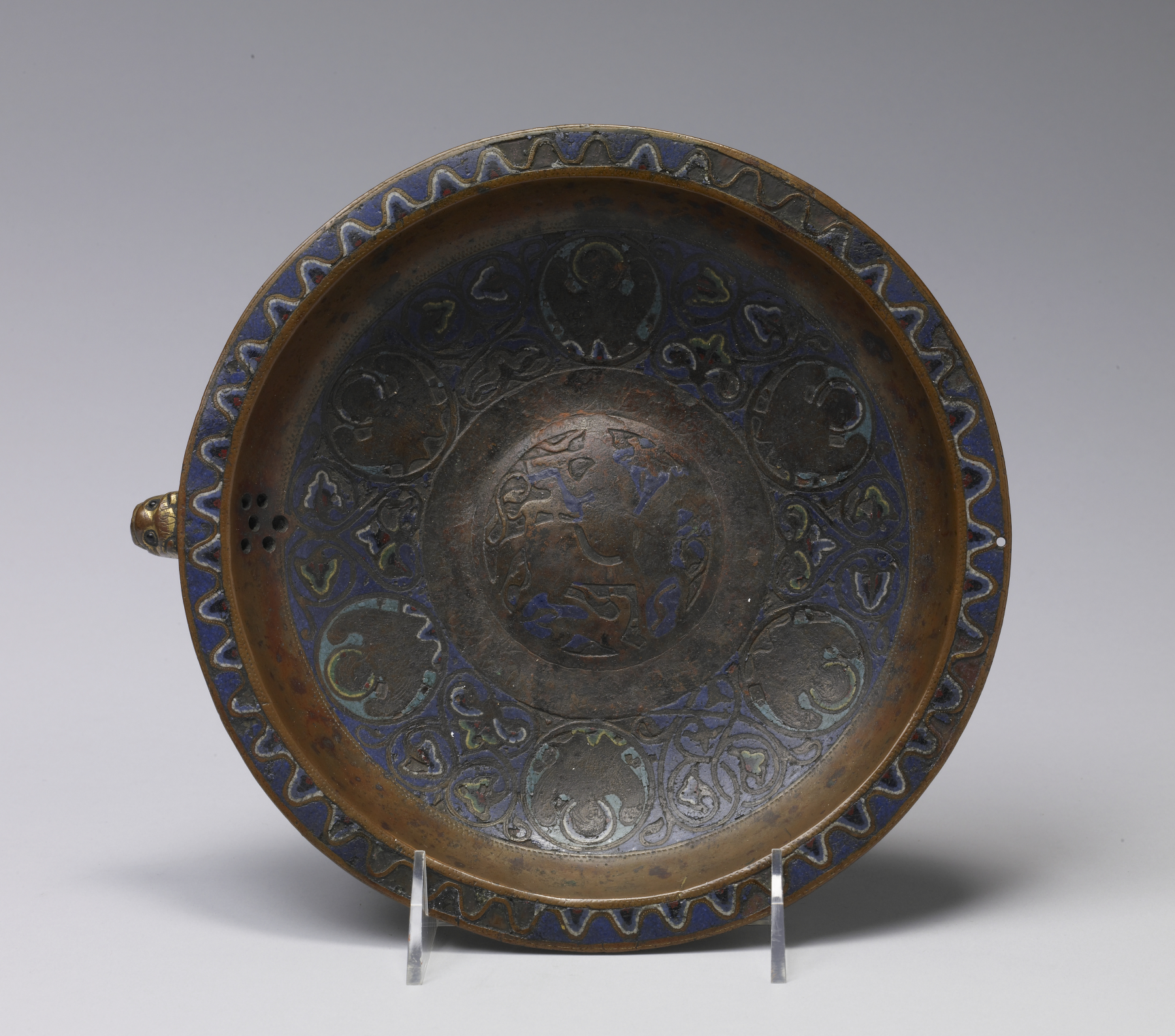Gemellion with Hunting Scene and Busts of Angels
(Medieval Europe )
A gemellion (from the Latin geminus, meaning "twin") is one of a pair of basins used for hand washing, either at home or during the Mass. Water was poured from the spouted bowl and was caught in the second bowl placed below. Many gemellions made in the enamel manufacturing center of Limoges, France, were decorated with secular-themed designs of birds, beasts, or courtly scenes. This bowl shows a rider on horseback hunting with his bird of prey and two dogs in the central medallion and busts of angels on the surround.
Provenance
Provenance (from the French provenir, 'to come from/forth') is the chronology of the ownership, custody, or location of a historical object. Learn more about provenance at the Walters.
Milanese Collection; H. Wareham Harding, New York, by purchase; Henry Walters, Baltimore, November 1921, by purchase; Walters Art Museum, 1931, by bequest.
Exhibitions
| 2002-2005 | Realms of Faith: Medieval and Byzantine Art from the Walters Art Museum. Frist Center for the Visual Arts, Nashville. |
| 2001-2002 | Realms of Faith: Medieval and Byzantine Art from the Walters Art Museum. Frist Center for the Visual Arts, Nashville. |
Conservation
| Date | Description | Narrative |
|---|---|---|
| 4/14/1953 | Treatment | cleaned |
| 2/5/2001 | Treatment | cleaned; loss compensation |
Geographies
France, Limoges (Place of Origin)
Measurements
8 3/4 in. (22.2 cm) (diam.)
Credit Line
Acquired by Henry Walters, 1921
Location in Museum
Accession Number
In libraries, galleries, museums, and archives, an accession number is a unique identifier assigned to each object in the collection.
In libraries, galleries, museums, and archives, an accession number is a unique identifier assigned to each object in the collection.
44.73



